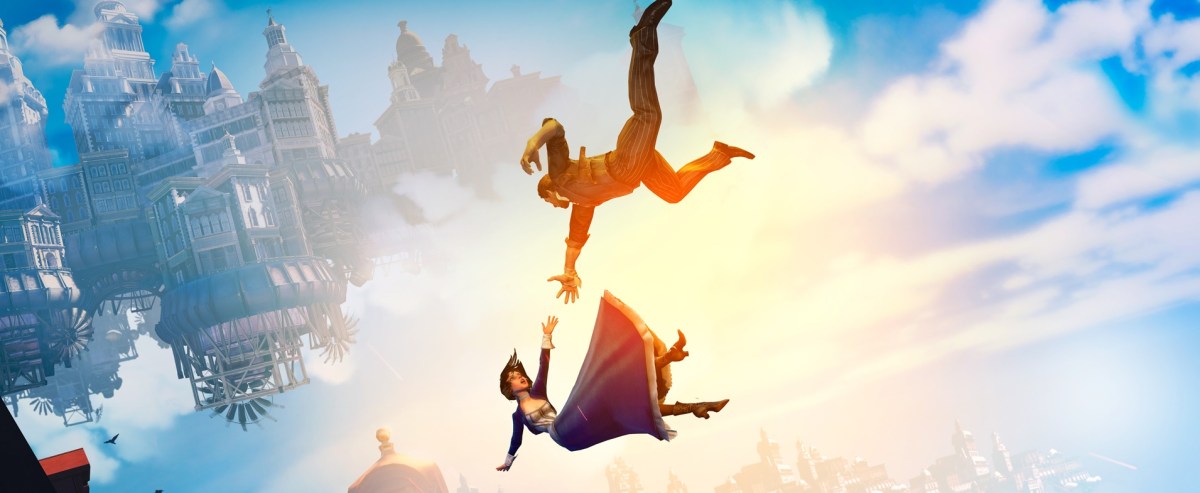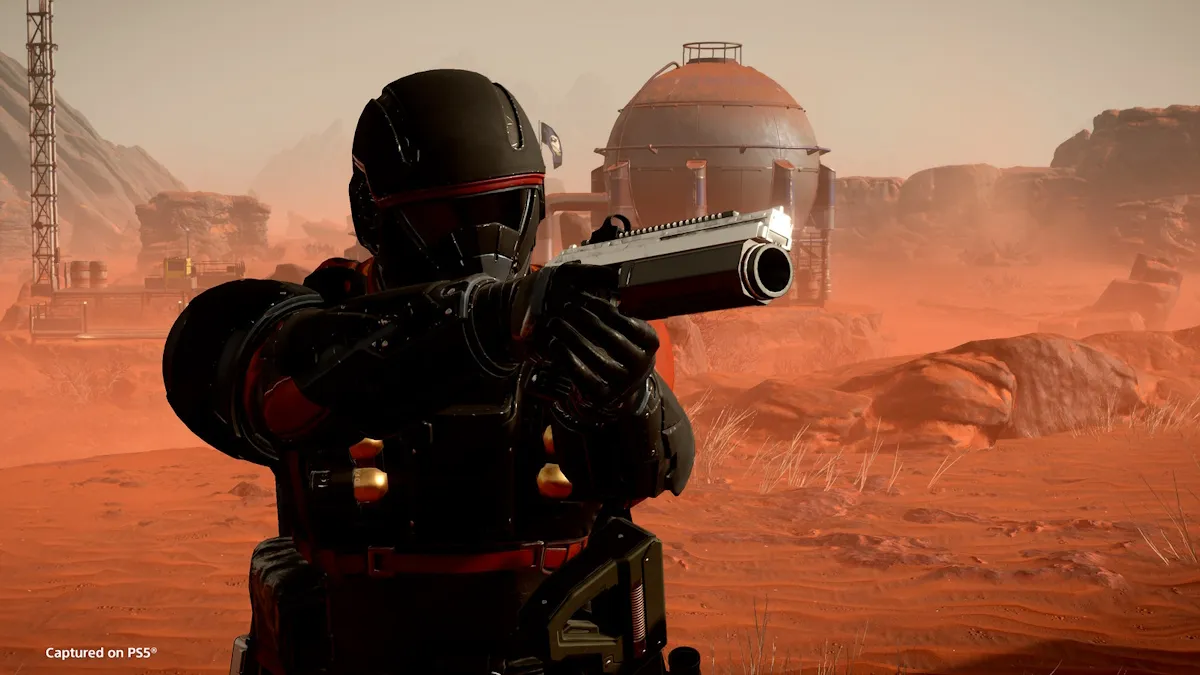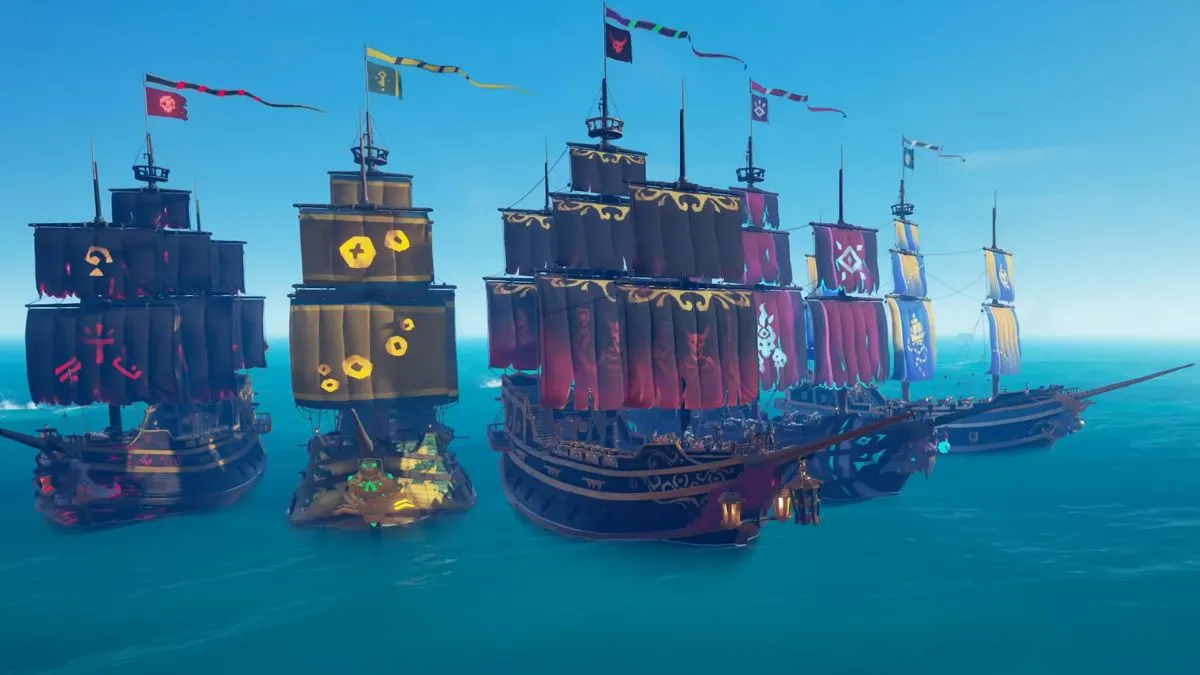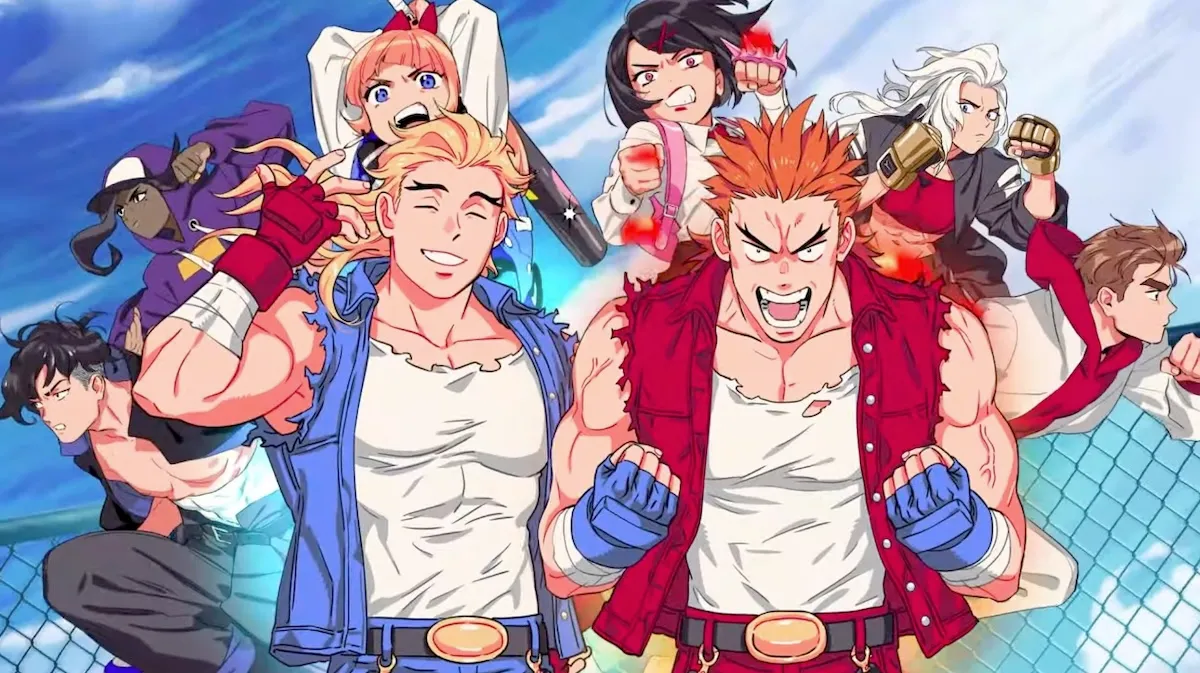A book by Phil Owen
Phil Owen is a freelance journalist and the author of WTF is Wrong With Video Games, a book that “sets out to lay bare all the fundamental issues with games, and the industry that makes them, that are holding this burgeoning medium back from fulfilling its true potential as interactive storytelling art.”
This following is taken from the book’s second chapter “San Andreas.” You can find the full text via Amazon or Gumroad for $3.

Nowhere in this book am I going to talk about Grand Theft Auto: San Andreas, but right now I am going to discuss the Dwayne “The Rock” Johnson movie San Andreas. Yes, for a book about video games that probably seems weird. I’m gonna do it anyway, because I have a good-ass point to make here. I don’t give a fuck.
San Andreas, the film, is very bad in a very specific way. It’s not the first over-the-top action movie that operates as a series of ridiculous physical obstacles the hero must overcome, and it won’t be the last. But it’s a bit unusual in how everything the filmmakers have the main characters do over the course of the film is with the intent to put them in the position to have to overcome those obstacles. They don’t simply encounter those obstacles — it’s more as if they seek them out.
The film is about The Big One, the alleged forthcoming mega-earthquake that looms over those of us who live in California. In the movie, the quake starts in Los Angeles, then jumps up the San Andreas fault to San Francisco (thus the title). The Rock plays a rescue helicopter pilot, and when the quake begins in LA, he takes his chopper and grabs his ex-wife out of a collapsing skyscraper, and then they head off together to SF to save their daughter.
But the chopper took some damage from all the skyscraper shrapnel and crashes outside a mall that’s being looted in the Central Valley, where the couple steals a truck (from a looter, smashing all the TVs said looter had jacked in the process) and continues their trek — until they encounter a fucking big-ass crack in the ground. There, they trade the stolen truck to an old couple, who happened to be chilling out right next to the crack, for a single-prop plane (convenient!), which they take the rest of the way to San Francisco. But the airport is all fucked up when they arrive, forcing them to dramatically parachute into AT&T Park, which managed to be in pristine shape despite the quake. Then The Rock decides to steal a motorboat and drive it to the other side of the city, just in time for a tsunami to roll into the bay and flood the entire peninsula, and The Rock drives his little boat over the tsunami like he’s playing Assassin’s Creed IV. After that, they drive the boat around the flooded city until they just randomly stumble upon the broken skyscraper their daughter is holed up in. And this is only half the movie, mind you; the daughter has her own nonsensical adventures as she wanders through SF with a couple randos she’d met earlier. And, yes, they do end up driving the boat through the broken skyscraper because why not, I guess.
All this comes off as checking items off a list. Well, we need some falling skyscrapers in LA, and we need a shot of a big-ass crack in the ground, and we still think baseball is cool and AT&T Park is pretty recognizable so we need to put that in there somewhere, and we need a tsunami, and on and on. There’s zero effort to make the absurd sequence of events seem organic, and you can feel it.
Your average big-budget video game is just like that. I once joked in an editorial about BioShock Infinite that the folks at Irrational Games put so many enemies in the game for you to shoot simply because the level designers had created places where they could put them. But probably a more tangible comparison would be Uncharted 3 and its sinking ship set piece.

Uncharted 3 is the quintessential example of video game indulgence for its relentless glut of complex set pieces, and nothing illustrates that better than the sinking ship. In the middle of the game, Nate Drake is kidnapped by some random pirates and locked in a ship graveyard. He breaks out, kills a thousand bad guys and makes his way to the one functional boat around, a cruise liner that had been repurposed for piracy. Nate eventually ends up in the cargo hold at the bottom of the ship, and yada yada yada a chunk of the hull gets blown out and the hold starts filling with water. That triggers a frantic escape sequence while the ship goes down — with bad guys continuing to try to kill you instead of saving themselves from certain death. The sequence is ludicrous on its face, but also in the context of the game as a whole.
See, this entire sequence is a non-sequitur. During the rest of the game, Nate and friends are in a race against time with some sort of secret society to find the fabled Atlantis of the Sands on the Arabian Peninsula, and these pirates have not much to do with that. They show up only for this small portion of the game, and never come up again after. In an already bloated game, the sinking ship sequence feels extra indulgent.
Uncharted 3 creative director Amy Hennig has said the development team decided before the story was written that there would be a big set piece on a sinking cruise ship, and this is the sort of thing that very often occurs when you operate this way. The end result is prone to be jarring and disjointed. Hennig seems to be a believer in that system, though, having worked in the industry for a long time. Though she is a writer, she began her career as an artist and worked her way up the ladder over the years.
“The story has to be the most flexible thing in the whole production,” Hennig told CNN in 2011, in regards to writing around the big set pieces and whatever else the designers constructed. That’s a terrible way of thinking, but Hennig is well respected as a writer (deservedly, even with Uncharted 3 being awful) and her comment gives this industry status quo some kind of creative credibility, at least for those on the inside. But realistically, you can’t expect to be able to regularly make major plot changes on the fly and at the whims of designers/other directors/corporate overlords and have the shit you make turn out to be any good. In fact, developer Naughty Dog has largely managed to dodge fate over the past decade, with two of the three Uncharted games and The Last of Us having basically competent storytelling. Collectively, however, that standard operating procedure doesn’t work that well for games, or any other storytelling media. Usually, working that way makes things go very wrong. It certainly did with Uncharted 3, the game Hennig was promoting in that interview.
Developers don’t often create a game with the unified intent to make one single piece of art. The development process as it exists today — and I’m particularly focusing on large productions because the more people involved, the worse the splintering becomes — is scatterbrained to the point of comedy. We’re lucky to play any major release that even had key thematic concepts behind it when development began. More often than not, development begins with a gameplay concept or concepts and everything is slapped together as the project goes along, typically with endless revisions until the product ships as cobbled-together nonsense.
It’s been amusing for me to talk about production with developers because they readily admit that they work that way. Many claim they see no issue with that approach, at least on the record, but the products speak for themselves by just feeling wrong when they’re released. Even games I actually enjoy, like Dead Space, suffer because of backwards development.

Dead Space began life as a pitch demo that focused on dismemberment as its primary mechanic, and you can really feel that in the full game. As you explore the derelict starship USG Ishimura, where most of the game takes place, you’re constantly reminded to shoot the limbs off the many monsters you have to fight. It’s hilarious because it makes little sense that shooting off a monster’s arms would kill it more quickly than any other method, but the developers made this dismemberment tech, and goddamn it, they’re going to remind you about it at every opportunity.
Glen Schofield, producer on Dead Space and the one who commissioned the pitch demo, said one of the most hilarious things I’ve ever heard a developer say: “The primary theme of Dead Space is dismemberment.” That completely nonsensical statement explains just about everything about the way developers too often think. I probably should end the book there, but let’s keep going anyhow.
It’s not some impossibly rare situation that a game built by a large staff will turn out to be pretty enjoyable. But it does feel like a coin flip, and when it all does work out it’s despite their goofy processes (combined, often, with interference from above). Sometimes all the chaos and noise of game development turns out something good, and more often it comes out like BioShock Infinite.
Infinite, more of a spiritual successor to the original BioShock than a second sequel, has become the poster child for the nonsense of games. It is a game that absolutely has ideas it would like to communicate, but the density of “arbitrary video game things” that accompany its mildly compelling plot is overwhelming, and it’s also a rare title where we actually know where all those things came from. Infinite is a shooter because the original BioShock was a shooter. You acquire superpowers in the game that are very similar to the powers you had in BioShock, because Infinite carries that franchise’s name, and that’s how game franchises work.
Infinite was a game that began life as a shooter with Bioshock mechanics set in a city floating above the clouds, and the story we find when we play it was grafted on later, after going through iterations during production. The resulting plot is not one that should be told through endless warfare, but warfare is the vast majority of the entertainment that Infinite attempts to provide. Because video games.

BioShock Infinite was birthed by industry royalty Ken Levine, and Kotaku editor-in-chief Stephen Totilo actually asked him at one point why the game was a shooter. His response was that he feels games need “a skill component.”
“I can sit down and write a scene about just about anything,” Levine said. “It’s really tough to make a game about any particular topic.”
The joke, which Levine didn’t get, is that he wrote a story that wasn’t even really about shooting dudes, and many of the stories we get in video games wouldn’t be about shooting dudes if they were adapted directly into other media. The real problem Levine actually had was not about his difficulty in figuring out a different skill element to use, but that he made the game first — 15 hours of shooting people — and story second, and they didn’t work together.
What matters in creating fiction is not to use logic that makes sense in the real world, because that is creatively limiting. What does matter to creating effective fiction is internal consistency: what happens in the story only needs to make sense inside the story. Video games rarely reach even that lowly bar. And while BioShock Infinite may be the poster child for games fucking up that most basic concept, it’s also emblematic of how the games industry is not really trying to get that right.
There was no turning point for me in how I went from feeling that games were on the way to achieving greatness as a form to being able to see them for what they really are, no one specific moment where I had that epiphany. It was a years-long process, but there was one evening I can point to where that journey accelerated significantly: when I spoke with several people who write games at a Writers Guild of America award reception, for a feature story I did at Kotaku. These writers described their efforts as collaborative, involving not just themselves and the folks in charge but also seemingly everyone else who was working on the games. They explained their jobs as being that of facilitators of whatever “fun” things the folks on the technical side decided to build into the game.
Jill Murray, lead writer on Assassin’s Creed III: Liberation, recalled at that reception an anecdote in which some designers decided midway through production to build a mission that included a fort. Murray, who essentially lived at their mercy, had to come up with both a good story reason for the player character, Aveline, to go to a fort at some point in the middle of the plot as well as find an actual, real-life fort that had existed in the historical period and region in which the game was set. All in a day’s work, she claimed.

I couldn’t help but find it odd that these writers worked that way, but even more surprising was that they claimed to be happy with that arrangement, especially given who some of these writers I spoke to were — Murray was also a novelist, and Bruce Feirstein had written a pair of screenplays for James Bond films before making the leap to James Bond video games.
Within the sphere of video games, it is very difficult to get people on the industry side to provide any meaningful criticism of the way things work ’round those parts when you have a recording device shoved in their faces. In more casual settings, off the record and with a healthy amount of alcohol for lubrication, those who are fully embroiled within the system tend to be more willing to openly criticize the way they’re forced to operate.
Whether those writers I mentioned were being sincere in their enthusiasm for the process is beside the point here, though. The process they described is itself the point. If one ever wonders why writing in games usually feels sloppy, one only needs to look at how the writing is done. The design of the game isn’t serving the vision; the vision is serving the design. The nature of storytelling is such that an alteration like the addition of a new location will likely require a significant reworking of the entire tale. If it’s simply tossed in haphazardly, it damages the whole product. In the world of film, late-stage rewrites or reshoots, or beginning production without a screenplay, or extensive retooling in the editing room, are usually considered a cause for concern. That concern is warranted, because the end product in those situations typically is subpar. Other times, the product turns out to be good anyway, and we would chalk that up to luck.
In video games, that sort of artistically problematic production is just accepted as how things are done. Because it is how things are done most of the time.




